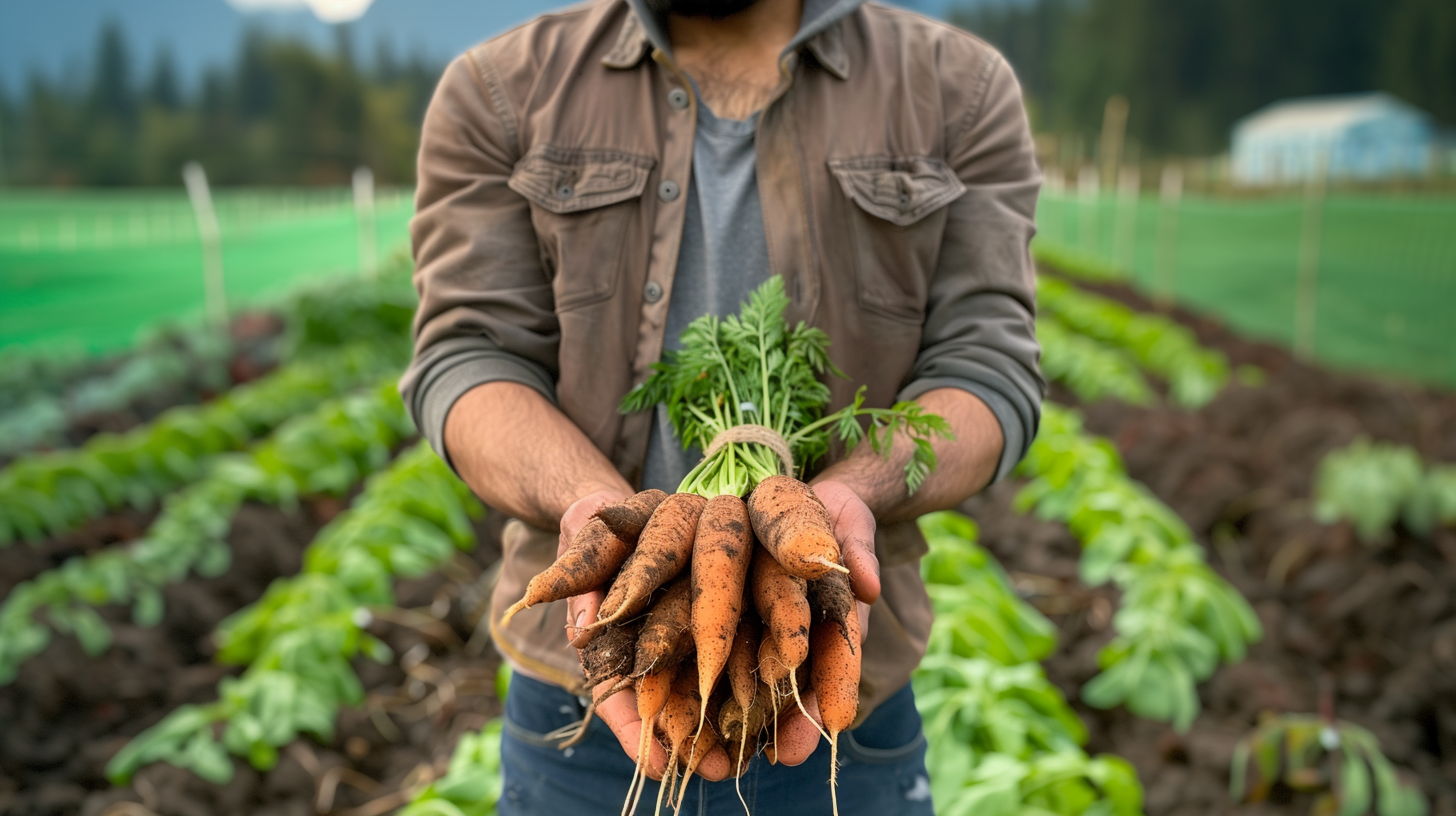
Introduction
Sam Dhillon Enterprises, also known as Sam Dhillon Farms, represents a cornerstone in Canadian agriculture, epitomizing the blend of tradition and innovation in the field of vegetable farming. Located in the lush landscapes of Abbotsford, British Columbia, this family-owned business has been delivering an extensive variety of high-quality vegetables to both large and small grocery stores across Canada. This article delves into the farm's rich history, its current operations under the stewardship of the family's third generation, and its pivotal role in the agricultural community.
Soil Preparation: Laying the Foundation
Carrots love deep, loose, and well-drained soil.
Here’s how to prepare the perfect carrot bed:
Remove Rocks: Clear your planting area of stones and debris to prevent misshapen carrots.
Work the Soil: Use a fork or tiller to loosen the soil to a depth of at least 12 inches. Carrots thrive in soft soil as it allows for proper root development.
Enrich the Soil: Add well-rotted compost or manure to enrich the soil. This will provide the necessary nutrients for your carrots and improve soil structure.
Seed Selection: Picking the Right Carrot
Variety is the spice of life, especially when it comes to carrots.Choose varieties that best suit your soil and climate:
‘Nantes’: Perfect for cooler climates, producing sweet, crisp carrots.
‘Imperator’: Great for well-cultivated soils, these carrots are known for their length and sweetness.
‘Chantenay’: Best for soils with heavy clay, producing stout, hearty carrots.
Planting Techniques: Sowing the Seeds of Success
Timing and technique are key in carrot cultivation:
Best Time to Plant: In Abbotsford, plant your carrot seeds from early spring to late summer for a continuous harvest.
Sowing: Plant seeds about ¼ inch deep and 2 inches apart in rows. Cover lightly with soil and water gently.
Thinning: Once your carrots sprout, thin them so they’re about 3 to 4 inches apart. This gives each carrot enough space to grow.
Watering and Nutrition: Quenching and Feeding
Carrots need consistent moisture and nutrients:Watering: Keep the soil evenly moist but not waterlogged. Water gently to avoid washing away the seeds.
Feeding: Use a low-nitrogen, high-potassium fertilizer to encourage strong root development without too much leafy growth.
Pest Management: Keeping the Bugs at Bay
Natural methods can effectively keep pests from ruining your crop:Crop Rotation: Avoid planting carrots in the same spot each year to reduce pest buildup.
Companion Planting: Planting onions or leeks near your carrots can help repel carrot flies.
Harvesting Tips: Timing is Everything
Harvesting at the right time ensures your carrots are flavorful:When to Harvest: Carrots are usually ready about 2-3 months after planting. Harvest when they’re about ¾ inch in diameter at the top.
How to Harvest: Gently loosen the soil around the carrot with a fork and pull the carrot out by the greens.
Storage Solutions: Keeping Carrots Fresh
Store your carrots so they last:
After Harvest: Cut off the tops to prevent them from drawing moisture from the roots.
Storage Conditions: Store in a cool, humid place. A fridge or a root cellar is ideal. Carrots can be kept fresh for several months under the right conditions.
Conclusion
Growing carrots at Sam Dhillon Farms has taught us a lot about patience, care, and the joy of harvesting your own food. We hope these tips help you cultivate your own delicious carrots. Happy gardening!
Buy Vegetables Wholesale
-
Egg Plants
-
Bell Peppers
-
Beans
-
Cabbage











